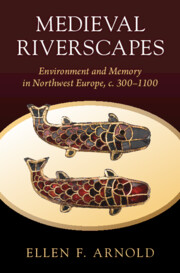Book contents
- Medieval Riverscapes
- Studies in Environment and History
- Medieval Riverscapes
- Copyright page
- Dedication
- Contents
- Figures
- Maps
- Tables
- Acknowledgements
- Preface
- Introduction
- 200–450: Late Antique Gaul
- 1 Poetries of Place
- 450–750: The Merovingians
- 2 Rivers of Risk
- 3 River Resources
- 750–950: The Carolingians
- 4 Rivers and Memory
- 950–1050: The Year 1000 Question
- 5 Ruptured Rivers
- 6 Meanderings
- 1050–1250: A New World?
- 7 The Same River Twice
- Bibliography
- Index
- Studies in Environment and History
1 - Poetries of Place
Published online by Cambridge University Press: 15 March 2024
- Medieval Riverscapes
- Studies in Environment and History
- Medieval Riverscapes
- Copyright page
- Dedication
- Contents
- Figures
- Maps
- Tables
- Acknowledgements
- Preface
- Introduction
- 200–450: Late Antique Gaul
- 1 Poetries of Place
- 450–750: The Merovingians
- 2 Rivers of Risk
- 3 River Resources
- 750–950: The Carolingians
- 4 Rivers and Memory
- 950–1050: The Year 1000 Question
- 5 Ruptured Rivers
- 6 Meanderings
- 1050–1250: A New World?
- 7 The Same River Twice
- Bibliography
- Index
- Studies in Environment and History
Summary
This chapter focuses on the cultural transformations of Late Antiquity, using poems and letters produced between 300–600. Late Antique poets used rivers as ways of addressing changing religious, political, and religious identities, and to help them create new images of self and country. These early writers were responding to both literary and cultural rivers and to real encounters with river ecosystems. They shaped a sense of place and community alongside the rivers of Gaul, and their poetry reflects not only a sensitivity to the aesthetics of these riverscapes but also an awareness of the non-human world of river ecosystems. All told, Gallo-Roman poetry highlights an appreciation for the natural beauty of rivers, an awareness of their ecological abundance, and a recognition of the manifold ways in which human cultures, histories, and economies were drawn up in their watery webs.
- Type
- Chapter
- Information
- Medieval RiverscapesEnvironment and Memory in Northwest Europe, c. 300–1100, pp. 19 - 64Publisher: Cambridge University PressPrint publication year: 2024

